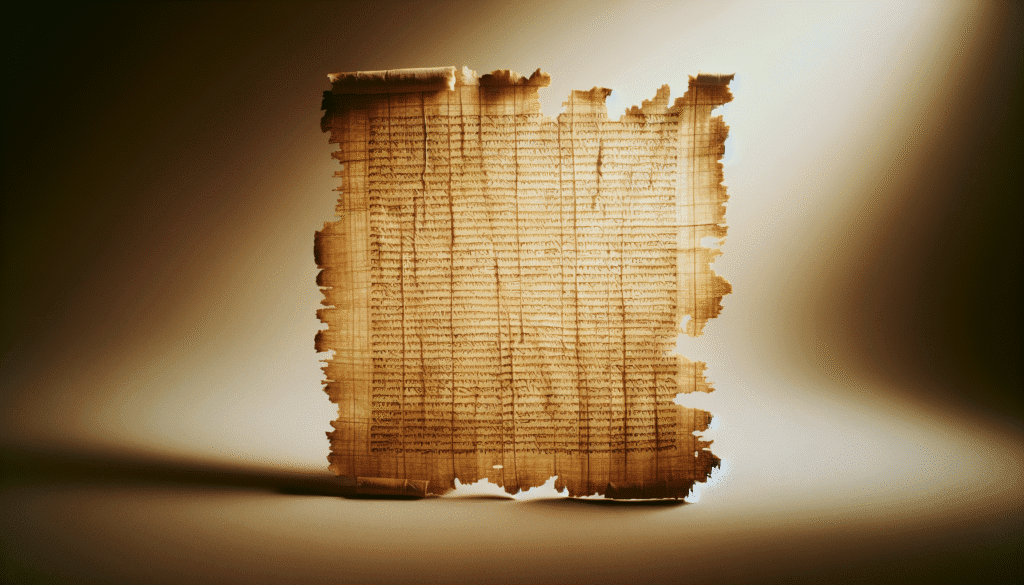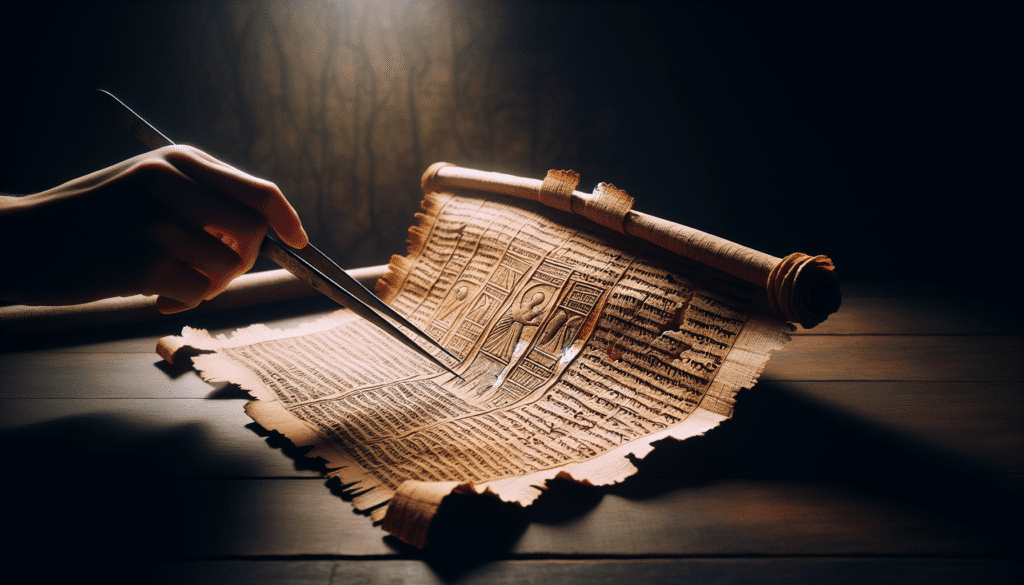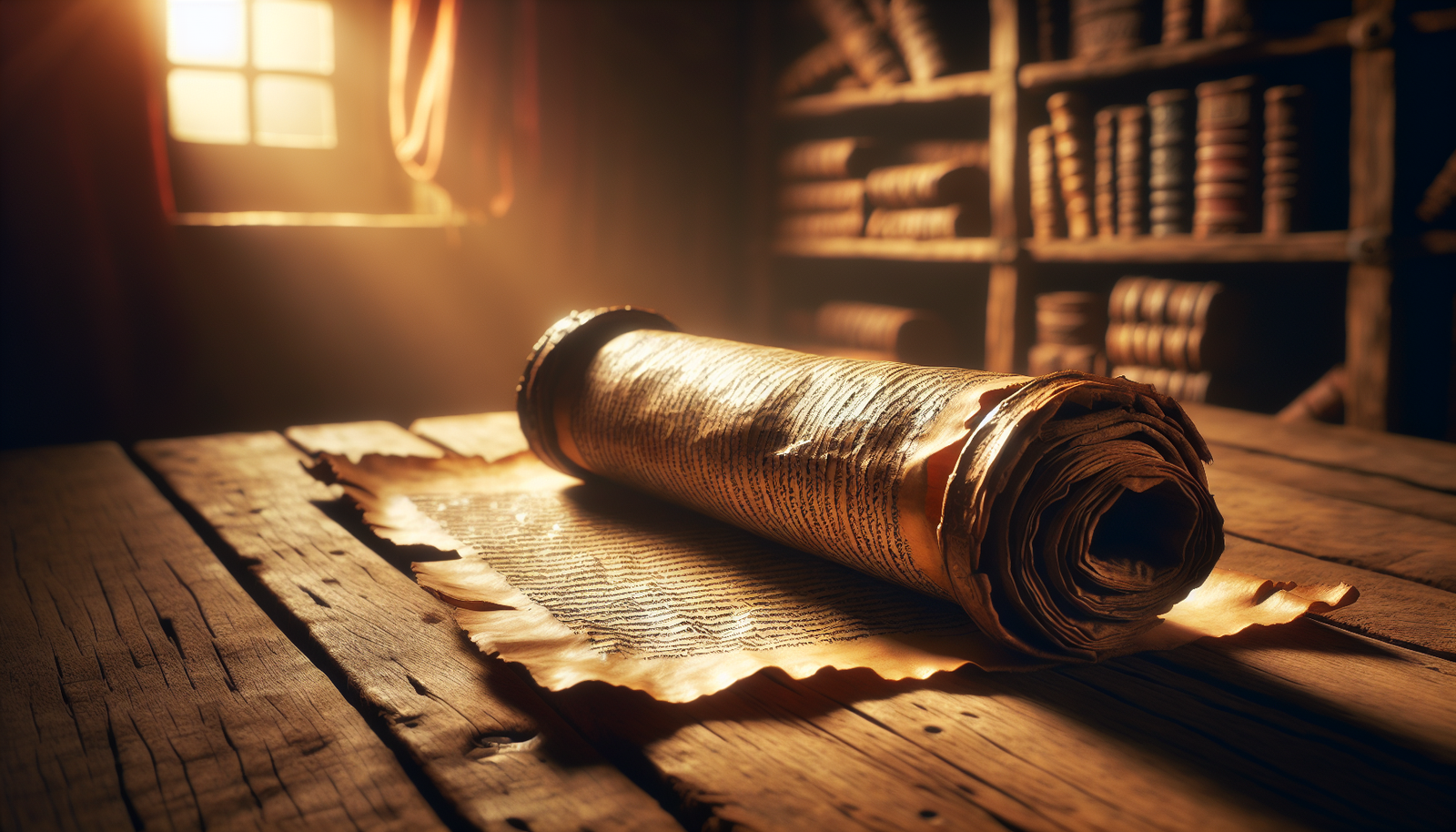Have you ever stumbled upon a fragment of history that could potentially redefine what we know about an entire era? You’re about to journey through one such remarkable discovery: The John Rylands Papyrus, often referred to as the first-century gospel fragment. But why, you might ask, is this dusty old piece of papyrus so significant in today’s world? As scholars and believers alike continue to debate its implications, this tiny fragment serves as a pivotal link between the ancient world and the present day, revealing layers of historical, theological, and cultural insights.
As someone with a PhD in Theology, I’ve spent years immersed in the study of ancient texts and their ongoing impacts. Trust me, the story of this papyrus is one for the ages.
TL;DR Box
- What is it?: The John Rylands Papyrus is a small fragment from the Gospel of John, believed to date back to the early second century.
- Why is it significant?: It’s among the earliest known fragments of the New Testament, providing insights into early Christian scripture and its transmission.
- Current Importance: By 2025, modern scholarship continues to explore its implications on biblical authenticity and historical accuracy.
- Where is it now?: Housed in the John Rylands Library in Manchester, UK.
- Who can access it?: It’s generally accessible to scholars, with images available for public viewing.

Understanding the John Rylands Papyrus
What is the John Rylands Papyrus?
The John Rylands Papyrus, known formally as Papyrus P52, is a small fragment of the Gospel of John, specifically verses from Chapter 18. Discovered in Egypt in 1920, it is now housed in the John Rylands Library, Manchester. Despite its size—roughly 3.5 x 2.5 inches—this papyrus offers a significant peek into the early transmission of the Christian New Testament. Being dated to the first half of the second century, it stands as one of the earliest pieces of New Testament text known today.
The Historical Context of Its Discovery
The papyrus was unearthed in an Egyptian market by Bernard Grenfell and Arthur Hunt, two eminent archaeologists of their time. Purchased among other texts, it was studied in detail by scholar C. H. Roberts in 1934 who famously dated it to the second century. Discoveries such as this often occurred in the tumultuous early 20th century—a time when the scars of war lingered and scholarly pursuits were often seen as a luxury. Today, it remains an essential artifact that ties contemporary society to its distant past.
Theological Significance and Scholarly Debates
The fragment’s relevance extends far beyond its age or text. Its mere existence is a proclamation of the early spread and usage of the Gospel of John. Moreover, it sparks debates about the textual integrity of the New Testament. Some suggest it proves the canon’s authenticity, while others argue it raises questions about textual variations over time. Yet, even in 2025, scholars continue to ask: How much should a small piece of papyrus influence our understanding of biblical history?
Physical Characteristics of the Papyrus
The papyrus is a classic example of early Christian manuscript craftsmanship. It’s a product of the codex—an early form of a book, indicated by its horizontal writing pattern. Written in Greek, the fragment’s neat, clear script provides researchers clues about the scribe who crafted it. And although the ink has faded over time, technological advancements enable researchers to study it without causing further degradation.
Technological Advances in Papyrus Analysis
Fast forward to the 21st century, and you’ll find technology playing a pivotal role in the study of the John Rylands Papyrus. Non-invasive imaging and multi-spectral photography have worked wonders in enhancing the text’s legibility. As of 2025, these methods not only help unlock potentially unseen details but also preserve the papyrus for future generations. This convergence of ancient artifact and modern technology fuels ongoing research efforts.
Present-Day Relevance and Public Engagement
In Manchester, the John Rylands Library proudly displays the papyrus, sparking interest and education among visitors. It serves as a useful tool for scholars, a fascinating exhibit for tourists, and a catalyst for religious discourse. The fragment invites dialogue about faith, history, and culture, providing a tangible connection to an ancient narrative that still resonates today.

FAQs
What is the dating technique used for the John Rylands Papyrus?
Scholars employ paleography—the study of ancient writing systems—to date the papyrus, examining stylistic aspects of the script to assign an approximate age. This method has estimated the fragment to belong to the early second century.
Why is the papyrus in Manchester, UK, instead of Egypt?
After its discovery, the papyrus changed hands through collectors and ultimately was purchased by John Rylands Library in Manchester to be part of their expansive collection of significant historical documents.
Can the public view the John Rylands Papyrus?
Yes, the papyrus is available for public viewing at the John Rylands Library. Digital images are also accessible on the library’s website for those unable to visit in person.
How does the papyrus impact modern biblical studies?
The papyrus is crucial for textual criticism and biblical studies by providing a chronological anchor for the New Testament’s writing, the distribution of texts, and early Christianity’s reach.
What other significant artifacts are housed at the John Rylands Library?
The library boasts an impressive collection, including early printed books, medieval manuscripts, and various ancient artifacts from different historical periods and regions.

People Also Ask
Is the John Rylands Papyrus the oldest Gospel fragment?
Not technically. While it’s one of the oldest, other fragments like Papyrus P90 are also considered among the earliest. Dating often relies on paleographic methods, leading to slight variances.
What part of the Gospel does the papyrus contain?
The fragment contains parts of the Gospel of John, specifically John 18:31-33 on one side and John 18:37-38 on the reverse.
How did the papyrus survive the centuries?
The dry, arid climates of Egypt helped preserve the papyrus. When handled correctly, ancient papyrus can endure for millennia due to its resilient papyrus plant fibers.
Why is it a ‘fragment’ and not a complete text?
Archaeological and historical conditions often leave us with fragmented texts, due to decay, damage, or initial extraction methods during discover.
Can anyone request to see the papyrus personally?
Typically, scholars can request access through the John Rylands Library, where it is kept under controlled conditions to prevent further deterioration.
The John Rylands Papyrus invites ongoing intrigue, fostering dialogue among historians, theologians, and everyday people. It stands as a testament to the journey of religious texts through time and helps piece together the puzzle of early Christianity. Its enduring presence reminds us that even the humblest of fragments can bear monumental narratives, translating them into today’s dynamic world.




